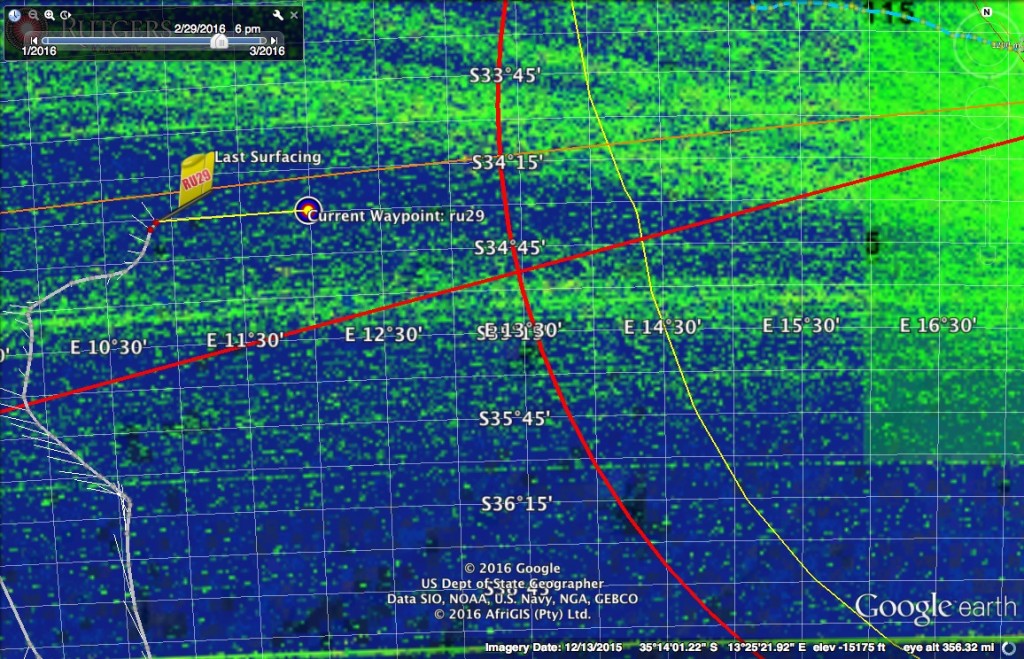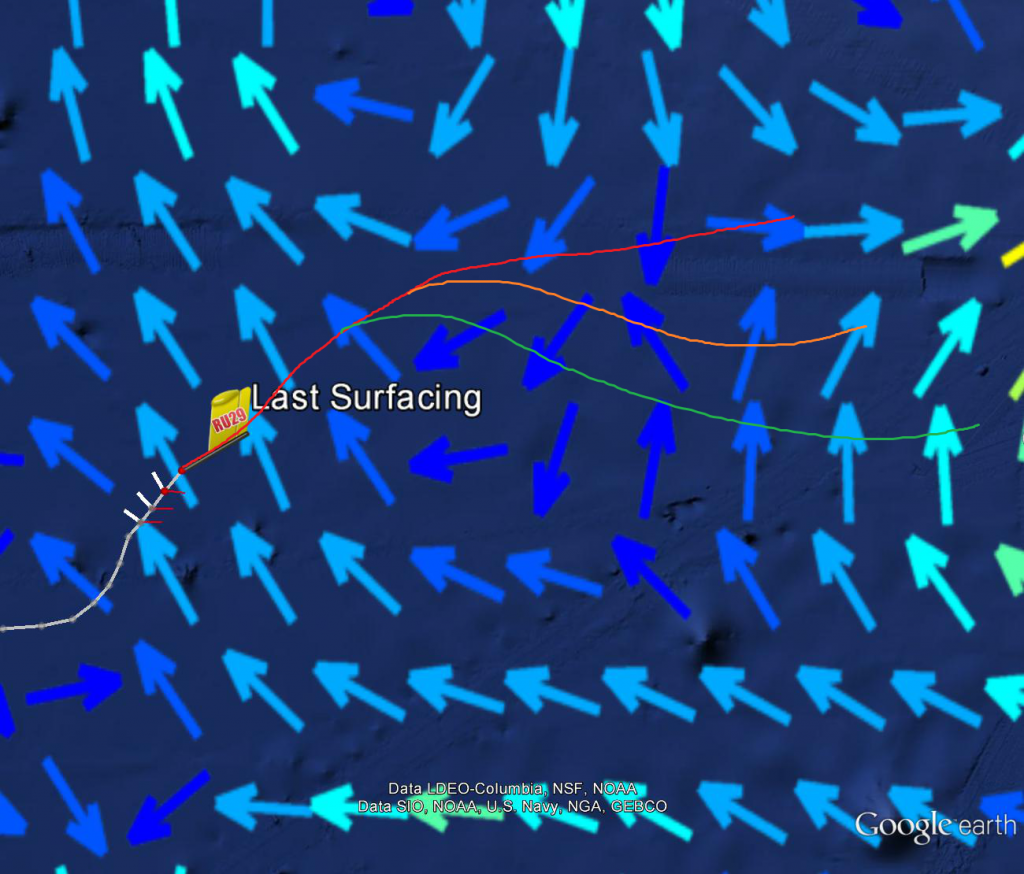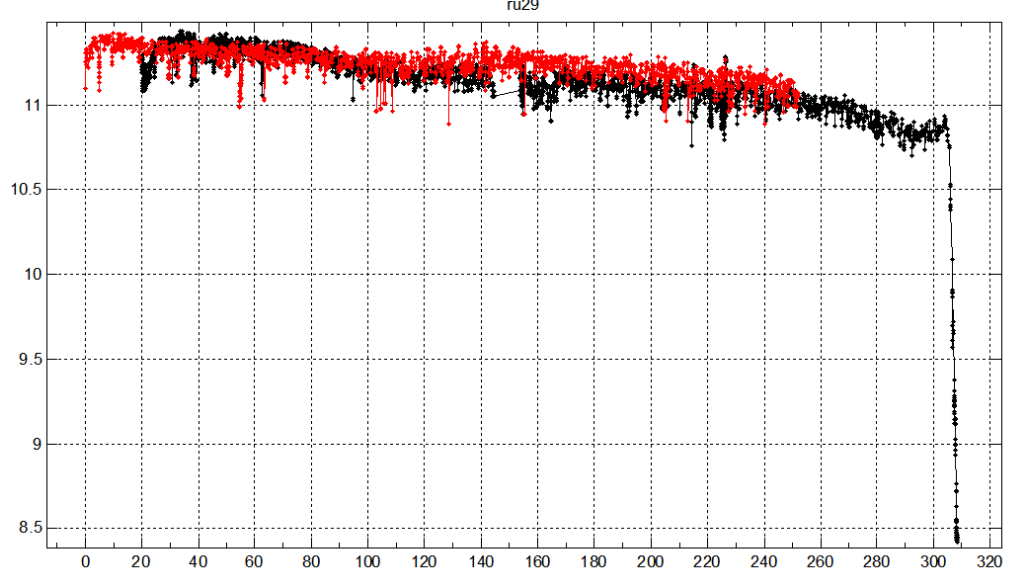To kick off the week, Challenger was given another waypoint close by to the East North-East in hopes that we can turn the glider and avoid the large eddy threatening to bring the glider way to the North. The waypoint also aims to keep the glider in the nice pocket of low ship traffic to reduce the chance of being struck by a boat while at the surface.
The pump also continues to have some issues as the team is now tweaking pitch angle and the deadband on the pump to find the ideal setting that gets the glider flying faster while getting less oddities or errors. To also try and reduce the stress on the pump, the dive depth was reduced again to 500m.
By mid-week, it was time to move the way point further east to try and avoid the eddy to the north. The OSCAR model seemed to agree closest to what the glider was recording, so we moved the way point to try and steer 29 into the weaker area of the current shown above in wednesdays product.
Finally, Dave plotted 29s power consumption and compared it to the mission from Cape Town to Ascension and found that according to the curve, we may only have about 60 days of power left giving us to the end of April to get the glider out of the water. With this new press for time, Dave and our friends down in South Africa have started searching for boats we can try and charter as recovery vessels as we now want to recover as soon as we can.
Force Wind Sea & Honor


